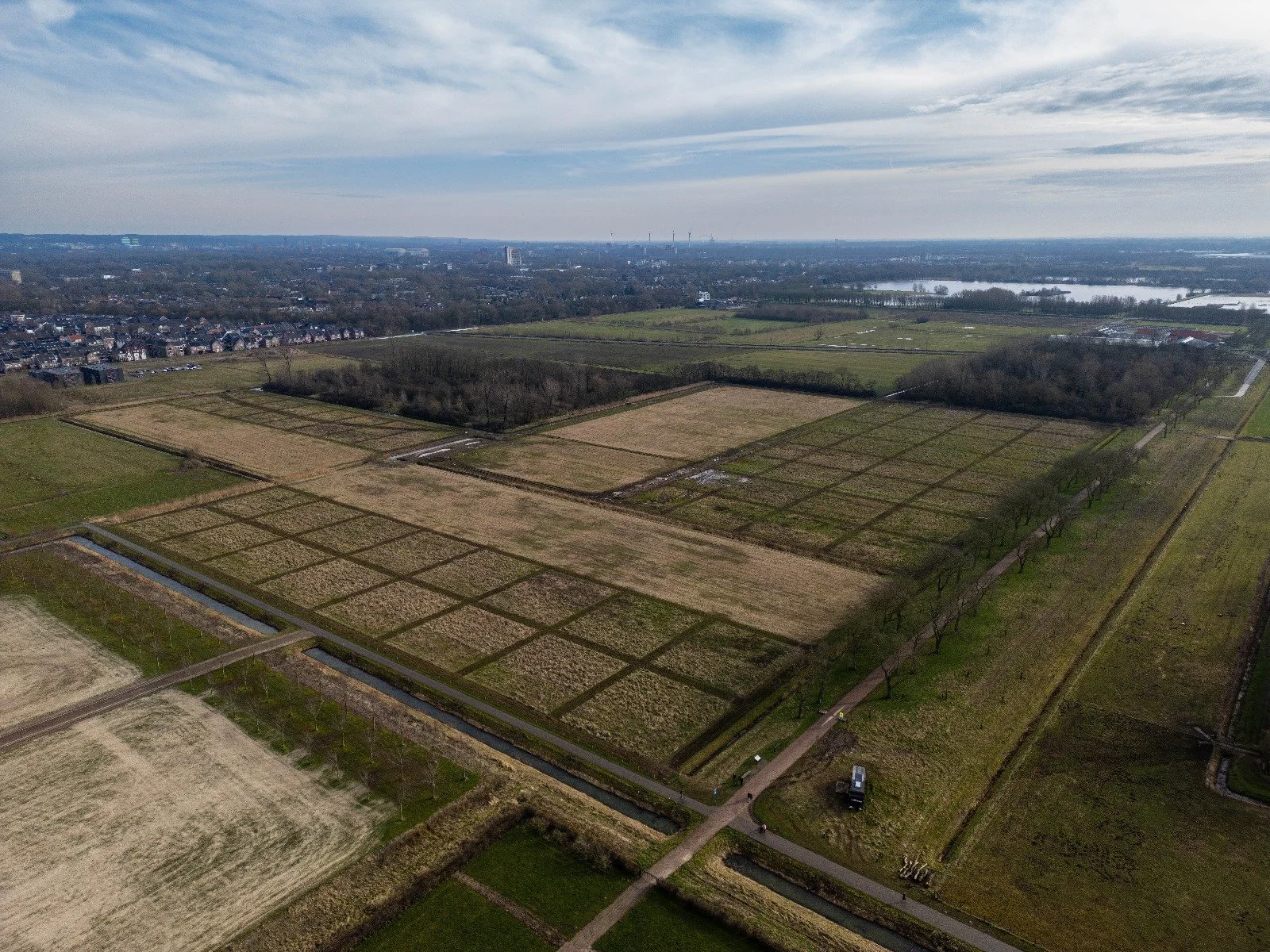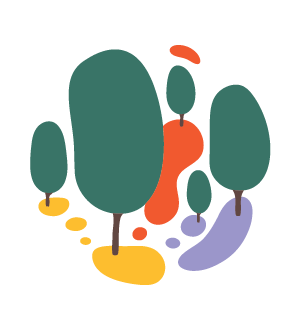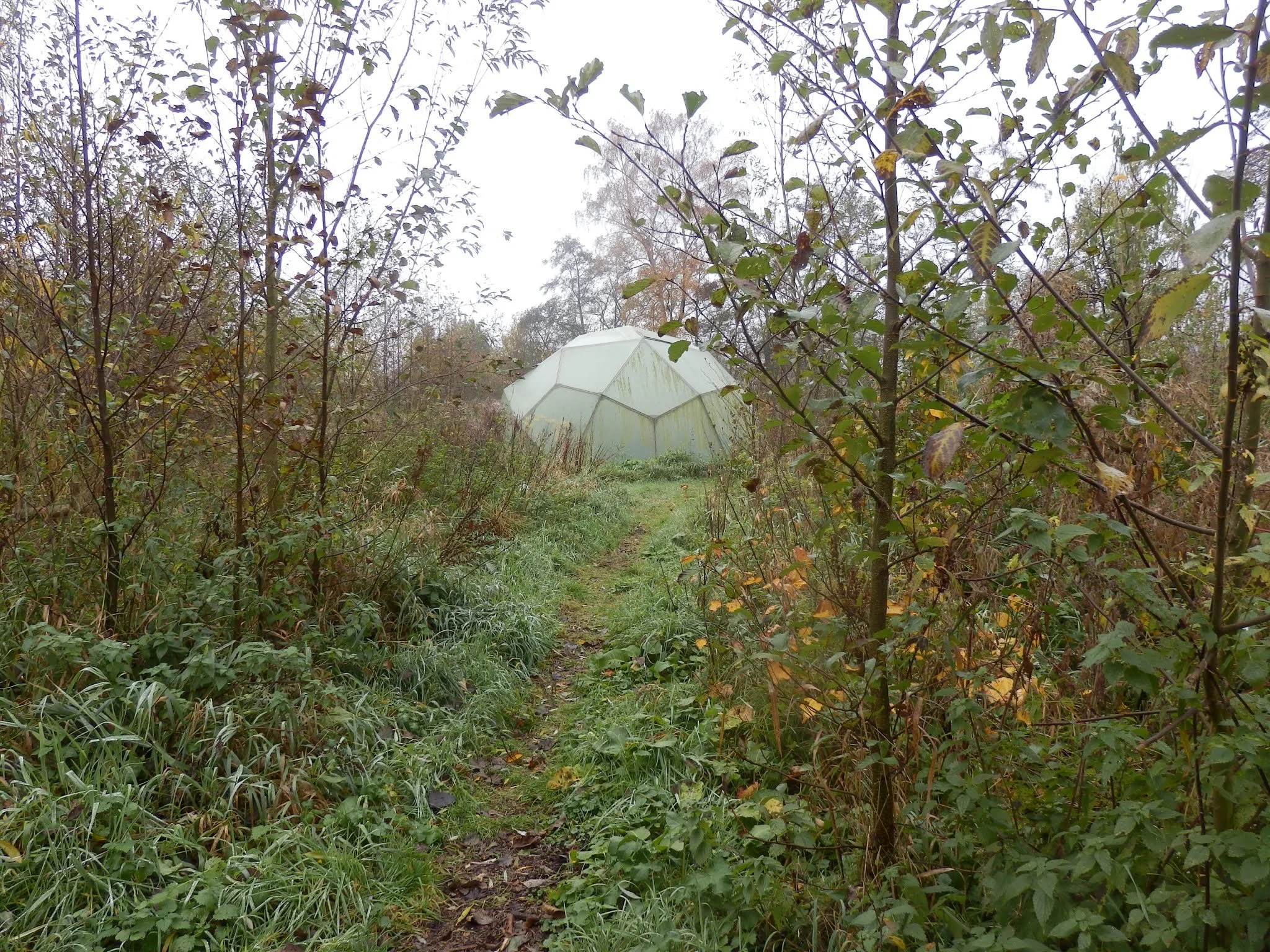FOOD FOREST GARDENS
An overview of exemplary food forest garden projects - both established and newly planted - all across the Netherlands.
-

Ketelbroek
In 2009, Wouter van Eck and Pieter Jansen established Food Forest Ketelbroek on a barren maize field near Groesbeek. Over the years, it has grown into the Netherlands' most renowned and pioneering food forest. With more than 400 edible species, Ketelbroek is a key experimental site for exploring the productivity and potential of edible plants. The area now boasts exceptionally high biodiversity, with species such as badgers, weasels, beavers, and fireflies making their home in the forest.
-

Biesterhof
De Biesterhof (2022) is a regenerative community farm near Millingen aan de Rijn, cultivating organic food on 25 hectares with a strong focus on soil improvement and biodiversity. Agroforestry plays a key role, with crop fields interspersed with rows of plum, hazel, and apple trees. Additionally, two food forests (5 ha), featuring 7,250 productive trees and shrubs, are being established as part of the community-supported agriculture model. A small selection from the list includes chokeberry, sweet chestnut, fig, honeyberry, mulberry, and plum.
-

Eemvallei
Eemvallei Zuid, located on heavy clay soil in Almere Oosterwold, Flevoland, is the largest food forest project in the Netherlands, covering 30 hectares. This wide-ranging project combines a food forest with herb-rich meadows orchards and a vegetable garden and offers a unique blend of agriculture and recreational spaces. Initiated in 2019, food forest Eemvallei Zuid is a collaboration between Stichting Voedselbosbouw, Staatsbosbeheer, Stichting Het Buytenwold, and Natuurboerderij Vliervelden.
-

Lekker Landgoed
Established in 2015, Voedselbos Haarzuilens covers 5 hectares of river clay near Utrecht. A collaboration between Stichting Lekkerlandgoed and Natuurmonumenten, this food forest features over 150 varieties of nuts, fruits, berries, and herbs. The project stands out for its rigorous monitoring, following the Dutch Food Forest Monitoring Program to track biodiversity, plant development, and soil health. It supplies fresh, local produce to restaurants, offering a direct connection between the forest and the culinary world.
-

Binnenbos
Natuurplaats Binnenbos is transforming a heavy clay meadow near Driebergen into a thriving 4.5ha food forest. This project is part of a larger initiative spanning over 80 hectares, owned by the ForestPeace Foundation since 2019. In its early stages, internal hedges were planted, dividing the area into 52 plots, while wild seeds of native ruderal herbs were sown to enrich the soil and enhance biodiversity. Surrounded by river basins, ditches, forests, and natural grazing areas, the site benefits from its diverse ecological context.
-

Schijndel
Voedselbos Schijndel (2019) is a pioneering food forest project located in Schijndel, North Brabant. Developed by Stichting Voedselbosbouw Nederland in collaboration with Groen Ontwikkelfonds Brabant and HAS Den Bosch, it spans 20 hectares across two sites, making it one of the largest production food forests in the country. A notable feature of this project is its innovative design, featuring hedges and trees planted in organized rows, which led to the creation of the term ‘rational food forest’. Additionally, Schijndel-based caterering company Vitam supports the initiative by utilizing its harvests in several of their restaurants.
-

Den food Bosch
Den Food Bosch is a 0.8-hectare food forest near Den Bosch, realized using syntropic farming principles developed by Ernst Götsch. This method emphasizes planting large quantities of willows alongside edible trees and shrubs to accelerate natural succession and enrich the soil. Despite its modest size, the forest quickly became productive, offering a diverse range of edible plants, such as sea buckthorn, oleaster, hibiscus, hardy kiwi and Japanese quince. It supplies local restaurants with fresh produce and thrives thanks to the dedication of numerous active volunteers.
-

Leuker 1818
Historically a dairy farm, LEUKER1818, led by Mark Venner, is undergoing a transformation into Limburg's first large-scale food forest, spanning 5.5 hectares. The forest features a variety of edible species, including walnuts, sweet chestnuts, apples, pears, plums, quince, olive willows, shipova, persimmons, Szechuan pepper, and Siberian honeyberries. Beyond agroforestry, the farm offers guided tours, sharing its 200-year history and sustainable farming practices. Ultimately, LEUKER 1818 will cover twenty hectares with various forms of agroforestry.
-

Eetmeerbosch
Boerderij Eetmeerbosch is a regenerative self-harvest farm in Nijmegen-West, Netherlands, integrating a market garden and a food forest. Operating under the Community Supported Agriculture (CSA) model, it offers members—referred to as "harvest companions" (oogstgenoten)—the opportunity to harvest vegetables, herbs, fruits, nuts and edible flowers throughout the seasons. The food forest (1.5 ha), a vibrant oasis amidst industrial surroundings, is currently truly reaching its production phase, providing an abundant harvest of berries, various herbs, apples, pears, and plums.
-

Voedselbos de Laar
The four Young Food Forest Farmers (De Jonge Voedselbosboeren) are transforming the 13-hectare ‘Voedselbos De Laar,’ just south of Arnhem, into a diverse mosaic landscape combining food forests and nature-inclusive fields. In their inaugural year, they planted 17,000 supporting species to establish the foundational ecosystem. The project includes three distinct types of food forests, each designed to cater to different markets: direct distribution, restaurants, and online supermarkets. Community members can participate through harvest subscriptions, allowing them to share in and contribute to the yield.
-

Voedselboss
Martijn Aalbrecht, known as 'De Voedselboss,' has established a half-hectare food forest in Hengelo. As a student of Martin Crawford, he was among the first in the Netherlands to embrace the food forest concept. In the beginning (2011), his plot, with its sandy and acidic soil, proved far from ideal for creating a food forest, yet the result speaks for itself, offering valuable insights gained along the way. In addition to his land, Martijn has also planted a second plot nearby, organized in rows and designed to harvest seasonally. He shares his knowledge and experiences through videos on YouTube.
-

Voedselbos Achterhoek
Voedselbos Achterhoek is an ambitious project transforming twelve hectares of land in Neede, Gelderland, into a rational food forest with a focus on agricultural food production, making it one of the largest private food forests in the Netherlands. About one hectare will be accessible to the public, allowing both recreational visitors and professionals to discover a range of edible species and experience the agro-ecosystem. The first windbreaks were planted in December 2021, and the final design was completed in the spring of 2022.
-

Lust en Last
Hofstede Lust & Last is located near Sommelsdijk on Goeree-Overflakkee, South Holland. In the winter of 2021-2022, the first windbreaks were planted on the clay soiul, and the final design was completed in the spring of 2022. The food forest is part of Hofstede Lust & Last, a place where tourists can camp among pear trees and where various activities and events take place. The project is managed by father Hein and son Onno Mijs and the planting of the first edible crops began in the winter of 2022-2023.
-
Voedselbos Vlaardingen
Voedselbos Vlaardingen (2015) is a semi-public food forest covering 9,000 m² on the edge of Vlaardingen, Rotterdam. The forest supplies local restaurants and is actively involved in offering nature lessons, including monthly tours and workshops. To realize the project, water channels were dug, and the soil that was removed was used to create mounds. Paths and planting were then established, allowing the food forest to thrive. Managed by Stichting Voedselbos Vlaardingen, it stands as a pioneering example of urban food forest development.

